JOHN HOWLETT
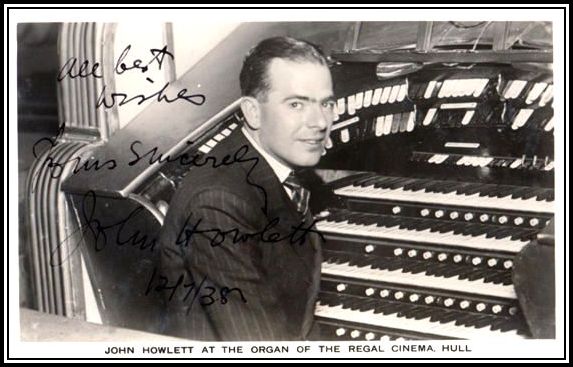
-oOo-
BACK IN ENGLAND
With the coming birth of The Howletts first child, John and his wife decided to leave Belfast and return to England. With a recommendation from The John Compton Theatre Organ Company via Jimmy Taylor, John was able to secure a position as a Theatre Organist there with ease.
John’s first posting upon his return from Northern Ireland was at the Central Cinema Stourbridge in the West Midlands. The opening of the cinema was in May 1929 with John playing the newly installed three manual ten-rank Compton Theatre Organ.
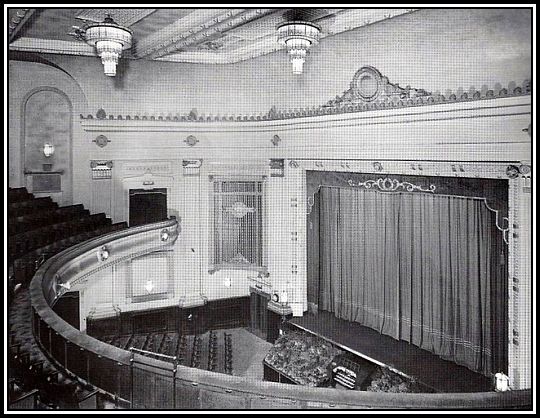 The Auditorium of the Central Cinema Stourbridge showing
The Auditorium of the Central Cinema Stourbridge showing
the Compton Theatre Organ in the centre of the orchestra pit.
This photograph reproduced from Cinema Treasures
-oOo-
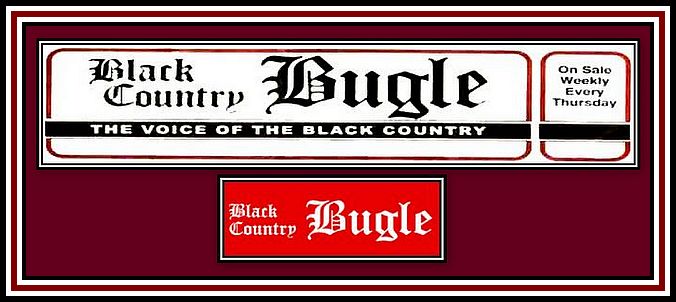
The following information on The Compton Theatre Organ of the Central Cinema Stourbridge together with details of the opening of the Cinema were obtained from the article, Opening Night of Lost Stourbridge Cinema, which appeared in The Black Country Bugle, 11th June, 2009 edition. Permission to include this information here was given by Mr. Gavin Jones.
The Compton Theatre Organ cost £4,000 and was installed in three separate chambers towards the sides of the building:
-
the front chamber accommodated the great Diapason pipes (16 feet long), the Orchestral Woodwind and Brass sections, and Percussion instruments, including a Glockenspiel and Xylophone;
-
the second chamber housed the orchestral strings, the Tibia Clausa (consisting of 97 pipes), the Vox Humanas, Cathedral Chimes and Carillon, Drums, Tom-Tom, Tambourine, Castanets, Triangle, Cymbals and various effects; and
-
the third chamber contained some of the chief parts of the electrical equipment including the electrical motor and centrifugal blower, the dynamo and switchboard, with its 6,000 switches. The console was connected to the organ by an electric cable of one hundred feet in length thereby allowing it to be moved to any part of the hall. The total number of parts of the organ was over 3,000.
Interestingly enough, this cinema did not screen a talkie when it was opened to the public, but a German silent film, which seems to have had a number of different titles (i.e. Pawns of Passion; Marter der Liebe; Liebesholle). Following the screening of a short film and a biweekly Newsreel (Pathé Gazette) and prior to the screening of the main feature, John played a selection from the 1926-produced operetta, The Desert Song, which was popular at the time. This was followed by the cinema’s musical director, Barrs Partridge, playing Sizilietta on the violin and The Central Orchestra performing Sonny Boy.
-oOo-
Later in John’s career, he was invited to return to play the Theatre Organ once installed at the Central Cinema Stourbridge, following its installation elesewhere. His recital was recorded by the BBC for future emission, but sadly, the programme never aired.
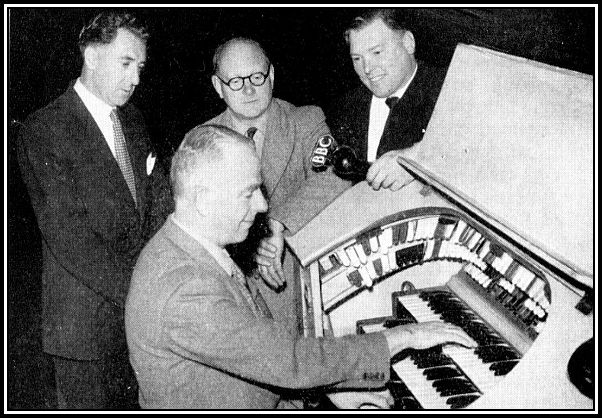 John Howlett was invited to play the Compton Theatre Organ once installed at the Central Cinema Stourbridge. The recital was recorded by BBC Radio, but sadly was never aired.
John Howlett was invited to play the Compton Theatre Organ once installed at the Central Cinema Stourbridge. The recital was recorded by BBC Radio, but sadly was never aired.
This photograph appeared in the Express & Star, Wolverhampton and appears here with permission.
-oOo-
Following his time at Stourbridge, John was offered the position of Theatre Organist at the Regal Cinema Handsworth in Birmingham. The cinema opened in 1929 and was owned by The Hockley Picture Company, but became part of the Associated British Cinemas (ABC) Circuit in 1930.
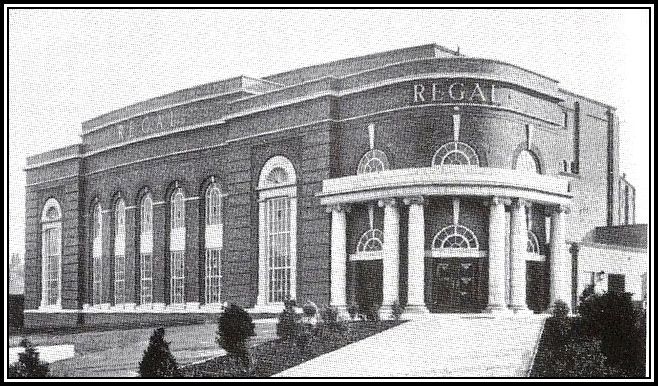 Regal Cinema Handsworth
Regal Cinema Handsworth
The Theatre Organ installed here was identical to that of the Central Cinema Stourbridge except that the console was fitted onto a lift, which allowed it to rise up to the auditorium from its storage place. Audiences did and still find it exciting when the spotlight falls on the orchestra pit to reveal the console and Organist rising up into the auditorium amid the magical sounds of the Theatre Organ.
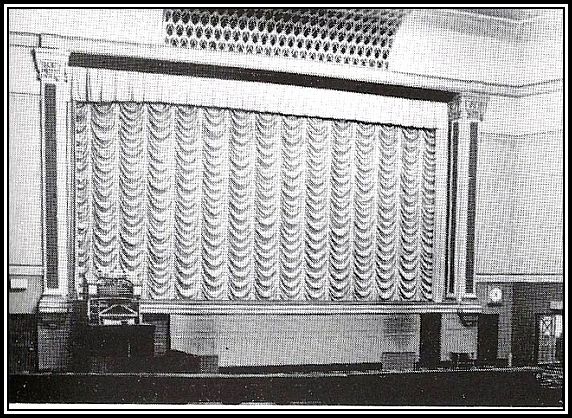 The Auditorium of the Regal Cinema Handsworth showing the Theatre Organ on the left.
The Auditorium of the Regal Cinema Handsworth showing the Theatre Organ on the left.
This photograph appears on the Cinema Treasures website.
-oOo-
John remained at the Regal Cinema Handsworth for almost four years. While there, in addition to his playing duties, he gave a number of radio broadcasts and also oversaw some replacements to the Theatre Organ ranks originally installed at the time of opening thereby making its sounds more to his taste and style. The changes included the replacement of the Oboe for a Krumet; the Clarinet for a French Horn; and the Vox Humana for a Harmonic Flute. John readily admitted that these changes would not perhaps suit all future Organists at the cinema.
-oOo-
In 1930, while at the Regal Cinema Handsworth, John entered an open competition for an original organ interlude. The competition was sponsored by Mr. G. Wales-Beard of Hill, Norman & Beard, makers of Christie Theatre Organs, and organised by the Melody Maker. John, who was still just twenty-four years of age, won the competition with an entry based on Shakespeare’s The Seven Ages of Man. As the winner, Hill, Norman & Beard gave him a gold watch and he received ten guineas from both the Management of the Regal Cinema and from The Compton Theatre Organ Company since he was employed to play a Theatre Organ made by the company at that time.
-oOo-
In 1933, John was offered the position of Resident Organist at the newly built Luxor Cinema in Eastbourne and he decided to accept.
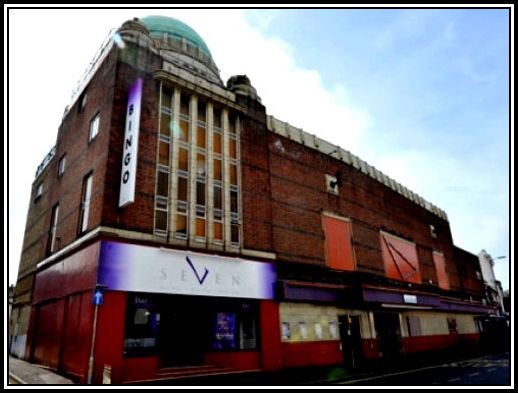 The Erstwhile Luxor Cinema seen here in 2007
The Erstwhile Luxor Cinema seen here in 2007
as the Luxor Seven Bingo Club which itself was closed in 2011.
The Luxor Cinema was built for The Walter Bentley Circuit, a small independent group of picture houses, and was opened to the public on the 3rd April, 1933. The Circuit was taken over by the Associated British Cinemas (ABC) Circuit in 1935 following the death of Mr. Bentley. Despite the takeover, ABC decided to retain the cinema’s name.
A three-manual six-rank Compton Theatre Organ had been installed and was played at the opening by John. The Theatre Organ had been installed with an Illuminated Console in an early style, sometimes known as the Thunder & Lightning Style. John apparently felt that the Theatre Organ was not powerful enough for the size of the auditorium, which offered 1,275 seats in the stalls and 700 in the circle.
-oOo-
Click here to watch a short video about The Luxor Cinema Eastbourne
and
Click here to see photographs of the building as the Luxor Seven Bingo Club
-oOo-
Later in his career in 1959, John was invited back to the Luxor Cinema to play daily hourly sessions for fourteen days during the screening of The Nun’s Story. He said his offerings were very well-received by the public, which somewhat surprised him since he did not play popular pieces, but rather more classical ones. Incidentally the Theatre Organ of the Luxor Cinema was removed from the cinema in 1972.
-oOo-
Following his time at the Luxor Cinema Eastbourne, John accepted a position at the Regal Cinema Southampton. The Cinema, which was built on the site of an earlier Regal Cinema, was opened in June 1934 and was built by the County Cinemas Circuit, but was taken over by Odeon Theatres Limited in 1939.
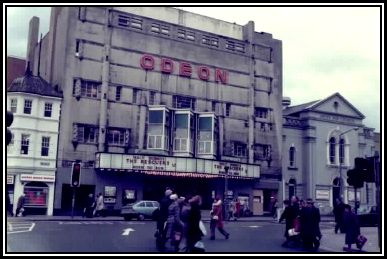 Regal/Odeon Theatre Southampton
Regal/Odeon Theatre Southampton
A four manual thirteen-rank Theatre Organ had been installed, which had been designed by Reginald Foort (1893-1980) and built by the Conacher Theatre Organ Company of Huddersfield. In an article written by John, he said that this Theatre Organ was very effective and he enjoyed playing it. Sadly this instrument was removed from the Cinema in 1962 and broken up.
-oOo-
The English Horn ranks found their way to Australia and currently reside in the Wurlitzer Theatre Organ installed at the Capri Theatre in Adelaide. Following his retirement, John would later play this instrument while on a visit to Australia.
-oOo-
While in Southampton, John met Arthur Foort, the brother of the organist Reginald Foort, and at the time, the manager of the Plaza Cinema Southampton. When Mr. Arthur Foort was offered the managerial position of the newly built Regal Cinema Margate, also a venue of the County Cinema Circuit, he offered John the chance to accompany him and open the Cinema, which he did.
Although the installed Conacher Theatre Organ with four manuals and twelve ranks plus a Steinway Grand Piano, was identical to that of the Regal Cinema Southampton, John felt that it did not suit the venue. John attributed this to several reasons, which included the cramped siting with the solo section being in two stages, one on top of the other, together with the placement of a heavy plaster grille, which essentially muffled much of the sound. Unfortunately these problems made this Theatre Organ a disappointment to him.
-oOo-
In 1941, the Regal Cinema Margate suffered a direct hit during an air raid and the auditorium and the Theatre Organ were destroyed. The Cinema was never rebuilt.
-oOo-
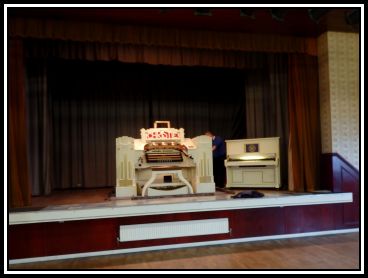
The Christie Theatre Organ of The Harworth Community Hall together with its Piano
(which is played from the Theatre Organ)
Click here to see more photographs of this glorious instrument
-oOo-
After spending some time at Margate, John accepted next a position at the Regal Cinema Hull. His time in Hull was planned to last for two weeks, but in fact turned into a four-year stay.
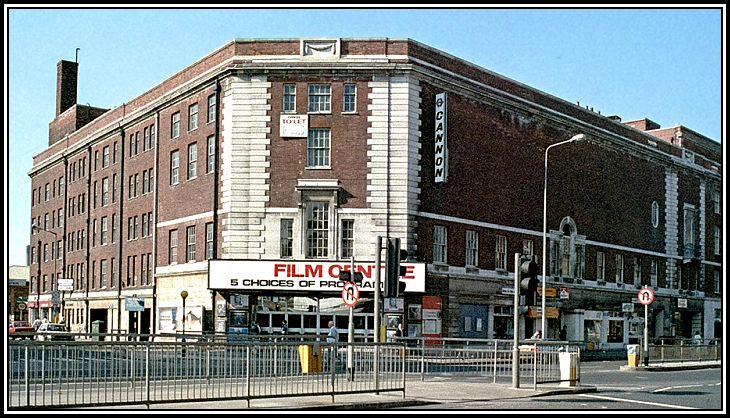 The Regal Cinema Hull shown here as a Cannon Film Centre
The Regal Cinema Hull shown here as a Cannon Film Centre
The Cinema was built for the County Cinema Circuit and completed in twenty-two weeks at a cost of £95,000 and was opened to the public in January 1934. The cinema was large, seating over two thousand five hundred spectators in the stalls and a balcony. In 1937, the Cinema was acquired by Associated British Cinemas (ABC) .
Click here to watch a video of the building of the Regal Cinema Hull
-oOo-
The Theatre Organ installed at the Cinema had four manuals and twenty-two ranks with the pipes being stored above the proscenium. It had been designed by Reginald Foort and built by the Conacher Theatre Organ Company.
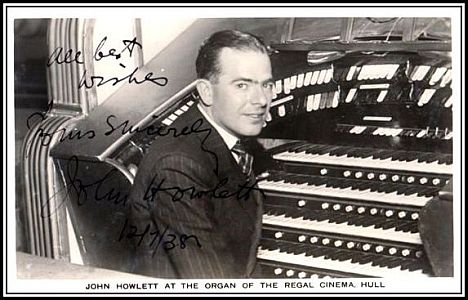
John enjoyed playing this Theatre Organ immensely and considered it his most successful adventure, as he put it, up until that time. He said that he was able to offer the public a mixture of popular and classical pieces that were well received.
The Organ was damaged during the Second World War . The console was removed in 1954 while the remainder of the instrument was later removed in 1959 broken up.
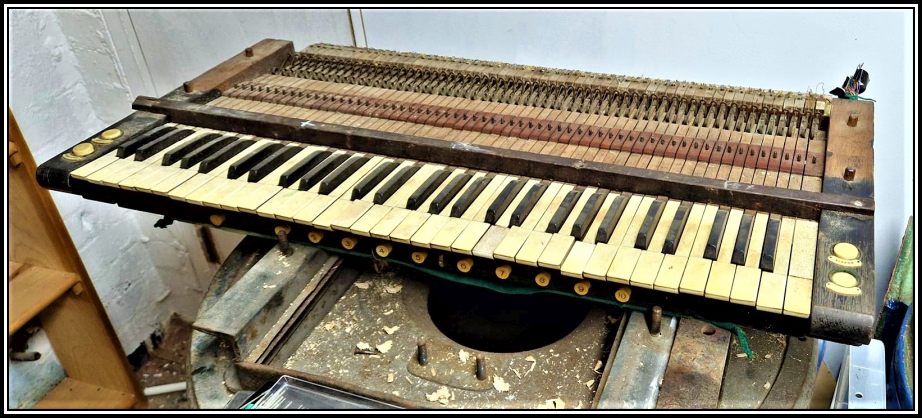 The recently-rescued Accompaniment Manual from the Conacher Theatre Organ once installed at the Regal Cinema Hull
The recently-rescued Accompaniment Manual from the Conacher Theatre Organ once installed at the Regal Cinema Hull
(This Photograph was provided by Paul Bland)
-oOo-
Incidentally, the Regal Cinema Hull, then part of the Cannon Group, closed in 1989 and was demolished in 2004.
-oOo-
 (This Photograph was provided by Paul Bland)
(This Photograph was provided by Paul Bland)
In September 1936, while John was still at the Regal Cinema Hull, he resumed radio broadcasts for BBC Radio. His thirty-minute programmes came from the Cinema and were made before a live audience. Unlike those made in Belfast, he was paid a fee of two guineas per programme of which he was required to pay one guinea of it to the Cinema management for use of the Theatre Organ!
-oOo-
Later in his career, John would make a number of other broadcasts for BBC Radio. These would include those from the Plaza Cinema Rugby (1941), an unidentified cinema in Evesham (1941), the Dominiom Theatre Tottenham Court Road , the Odeon Theatre Swiss Cottage (1945-1947) and the Odeon Theatre Leicester Square (see later). In addition to these and other venues that John was to broadcast from, he also played at St. George’s Hall in Langham Place. The BBC installed the original BBC Theatre Organ here in 1936, which was built by The Compton Theatre Organ Company.
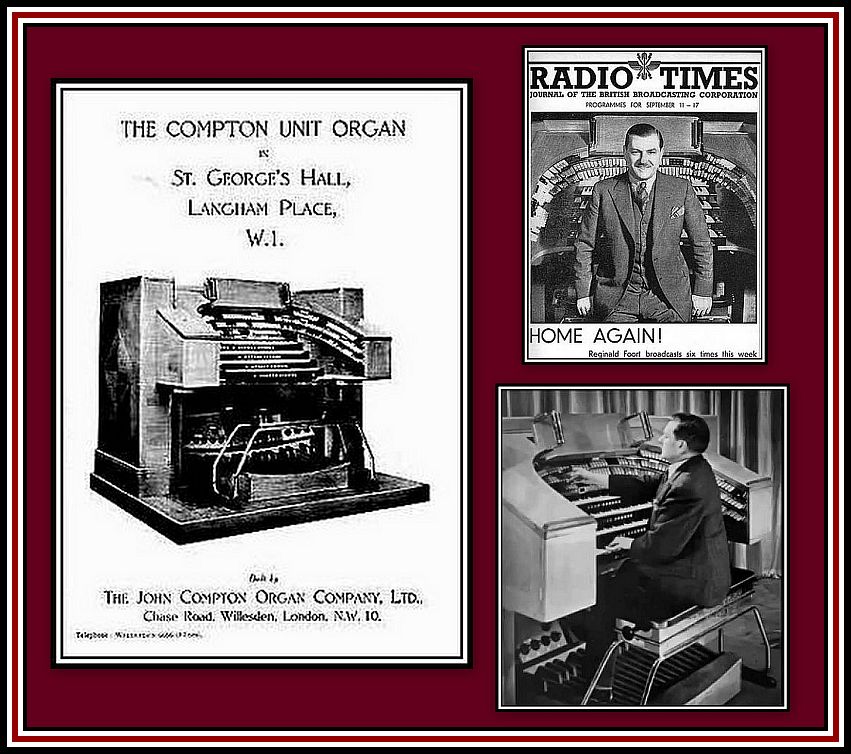 The BBC Theatre Organ with Reginald Foort (1893-1980)
The BBC Theatre Organ with Reginald Foort (1893-1980)
-oOo-
John Howlett at The BBC Theatre Organ in 1962 and playing Marianina for the BBC Light Programme
-oOo-
John was also able to pursue his love of playing the Pipe Organ during his time in Hull by playing the Organs of many churches in the area and also by giving a number of recitals at St. Mary’s Church in Beverley and Hull City Hall. He admitted that he loved to play what he called fine music and especially enjoyed playing the rebuilt Compton Pipe Organ installed at Holy Trinity Hull, which he believed to be the loudest Parish Church Organ in the U.K.
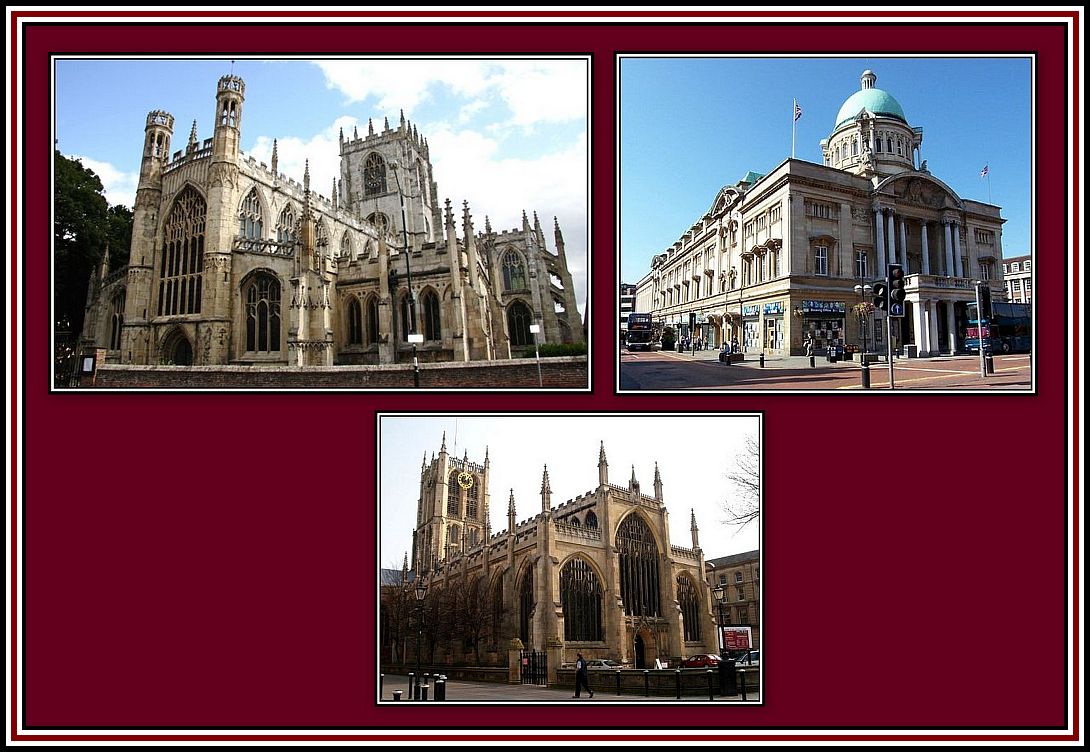 Upper Left: St. Mary’s Church Beverley; Upper right: Hull City Hull; Lower: Holy Trinity Hull
Upper Left: St. Mary’s Church Beverley; Upper right: Hull City Hull; Lower: Holy Trinity Hull
-oOo-
John traveled, when able, to Manchester where he would enjoy the playing of the Organist of Manchester Cathedral, Norman Cocker (1889-1953). They became great friends and Mr. Cocker would come to Hull and he and John would often perform together in a number of Hull Parish Churches. John always felt that Mr. Cocker never received the accolades that he deserved for his playing. Today, Mr. Cocker is mostly remembered as the composer of Tuba Tune.
Tuba Tune played by the Organist of Hereford Cathedral
—ooOoo—
ACKNOWLEDGEMENTS
I would like to thank Mr. John Leeming for his invaluable help in the preparation of this piece and for uploading the musical pieces to digital format.
Special thanks are offered to the family of Mr. Howlett, and in particular to Ms Amanda Ratcliffe and Ms Emma Coleman, for providing photographs and information on his life.
I would like to thank Mr. Paul Bland for providing a number of photographs and links.
Many thanks for allowing the reproduction of photographs, drawings and information are also due to: Mr. Gavin Jones of the Black Country Bugle; Mr. Adam Phillips of the Express & Star, Wolverhampton; Ms Emily Randall, Senior Membership Development Officer at the Historical Association, Bournemouth; Mr. Michael Stead, Heritage Team at Bournemouth Library, Bournemouth; Mr. Matthew Lloyd for allowing the drawing of the Putney Palace that is reproduced from his website; and Mr. Nick Smith.
Special thanks are offered to Mr. Anton Stromlund for providing a copy of his playing of a Danish children’s song.
—ooOoo—

